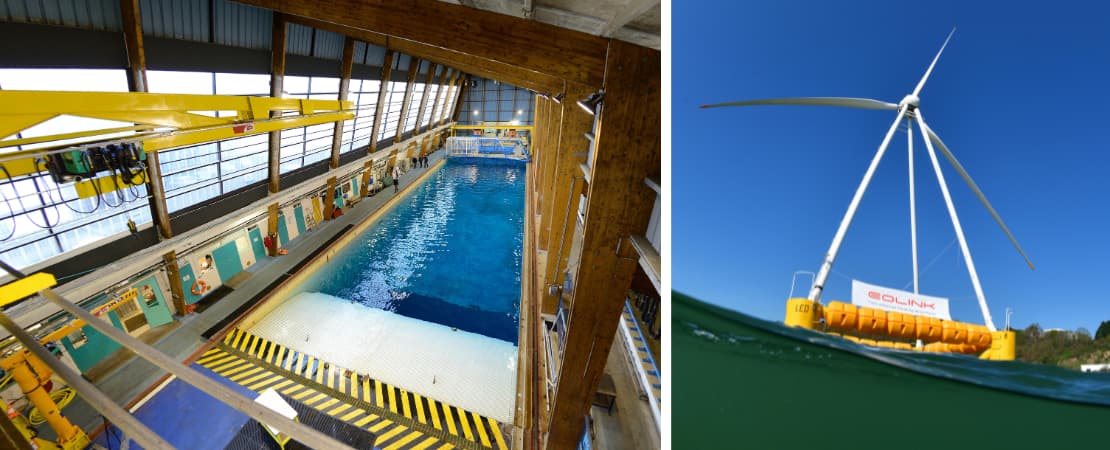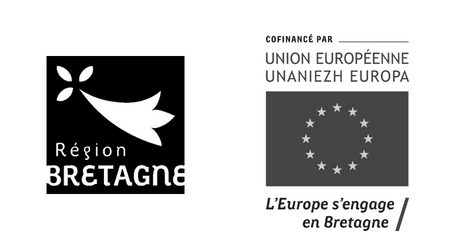Ifremer researcher Christophe Maisondieu recounts the Institute’s involvement in the development of offshore renewable energy (MRE).
How is Ifremer involved in offshore renewable energy?
Ifremer has identified offshore renewable energy as one of its four research priorities for the coming 5 years. Our spectrum is fairly broad. The idea is to be able to provide answers to the questions raised by both industry and government departments to bolster the development of offshore renewable energies. Our scope encompasses technological aspects such as system development and design, as well as the environmental aspects and socio-economic impacts associated with all offshore renewable technologies.
What test facilities does Ifremer have at its disposal for the development of offshore renewable projects?
Ifremer has various test facilities. Firstly, the Saint-Anne du Portzic site is an in situ station where different intermediate-sized prototypes can be tested. We also have a test tank in Brest fitted with a wave generator, which is suited to testing reduced-scale models of wave energy converters, floating wind turbines, ocean thermal energy conversion systems and floating systems. The hydrodynamic flume tank in Brest can generate regular or irregular waves for concept validation, upstream studies and training purposes. Finally, the wave and current flume tank in Boulogne-sur-Mer can be used to study the behaviour of underwater or surface machines, in particular tidal turbines, in current and wave conditions.
MRE, one of Ifremer’s priority themes
How long has Ifremer been working on technological aspects for?
At least twenty years. Our aim is to drive forward innovation through cooperative research programmes in order to boost system performance and reliability, while taking into account the system’s environmental impact during its development. This involves studying the impact on biodiversity as well as the socio-economic impact, interactions with other sea users and uses, which are also important factors. To implement this global approach, Ifremer drew up a roadmap in 2024. Our goal is to define a global, cross-cutting approach that really brings in the multidisciplinary aspect that is an important element available within the institute.
What does this roadmap aim to achieve?
It focuses on three main areas. The first involves understanding these marine socio-ecosystems, comprising operational farms and their interaction with the marine environment in the sense of a socio-economic system.
The second focus is on solutions for reliable, high-performance systems. This looks more at technological aspects, but without overlooking the need to limit environmental impacts and the question of interactions with other maritime activities.
The third aspect focuses on observation and data management capabilities to contribute to the assessment of the impact on other structures. This includes the development of instrumentation, observation systems, as well as data management and banking.
What do these cooperative research projects entail?
They can be carried out through European projects or even national-level projects funded by the French National Research Agency, for instance, and aim to meet the industry’s needs. In the case of floating wind, this can involve system optimisation, generally focusing on the float and moorings rather than the turbine itself which is not really Ifremer’s area of expertise. We work more on the association of the turbine with the float, the mooring lines, and the materials used for these structures, which must also meet environmental criteria.
At national level, we have partnerships relating to test facilities. Our facilities form part of a national research infrastructure called THeoREM, which groups together hydrodynamic and mechanical test facilities belonging to Ifremer, Centrale Nantes, Gustave Eiffel University and, since 2024, the Open-C Foundation, which also provides its offshore test sites. One of the aims of this infrastructure is to garner recognition at European level. THeoREM is ultimately set to become the French representative within MARINERG-I, a European Distributed Research Infrastructure which aims to support the development of offshore renewable energy, including floating wind.
How many people at Ifremer work on offshore renewable energy?
According to figures for 2024, an estimated 180 people work in this area, out of a total of around 1,500 employees divided between our four main scientific departments (Physical Resources and Deep-sea Ecosystems, Biological Resources and Environment, Oceanography and Ecosystem Dynamics, Research Infrastructures and Information Systems). PhD students work with us on our scientific research projects and test facilities.
Has Ifremer supported any wind projects?
We provided support to Eolink during the test phase of their 1:50 scale proof-of-concept floating wind turbine. We then carried out intermediate-scale testing (1:10) at the Sainte-Anne du Portzic site. The next step for them will be to deploy their solution at the SEM-REV site operated by the Open-C Foundation. In between times, Eolink will be returning to our tanks to carry out additional tests. One of the benefits of our test facilities and our internal organisation, as well as our ties with THeoREM, is that we can support such projects from proof of concept through to the pilot prototype and pre-industrialisation phases.
We are also involved in the VELELLA project (led by BW Ideol), which aims to prepare the deployment of commercial floating wind projects. We are particularly involved in R&D, on specific aspects, for wind turbines that have already been deployed, such as the turbine currently deployed at the SEM-REV site. We provide support in relation to materials, mooring lines and behaviour.
What offshore renewable projects are on the cards next for Ifremer?
We are involved in the cross-cutting project EMOI, conducted as part of a call for projects by France’s national offshore wind energy observatory (Observatoire national de l’éolien en mer). It aims to gain a better understanding of the impact of offshore wind farms, whether bottom-fixed or floating, on pelagic ecosystems. To do so, it develops and optimises observation methods that can be used to conduct environmental monitoring of both the physical environment (hydrodynamics, water quality) and the biological environment (primary production, fishery resources).
In terms of tidal power, we have quite a strong partnership with HydroQuest, which is set to develop a pilot farm. Together we’ve developed a joint laboratory, Verti-Lab, through which we provide support for their four-year R&D programme. Meanwhile, we are also partners in the Flowatt project which involves deploying a pilot farm in the Raz Blanchard. We are involved in the R&D aspects of resource characterisation and machine optimisation. For this, we use our test facilities, in particular the current and wave flume tank in Boulogne-sur-Mer.
All being well, in the autumn we should see the deployment of a floating wind turbine developed by BlueTwin through the Floatwin project. We will be deploying an intermediate-scale prototype at the Sainte-Anne du Portzic site.

